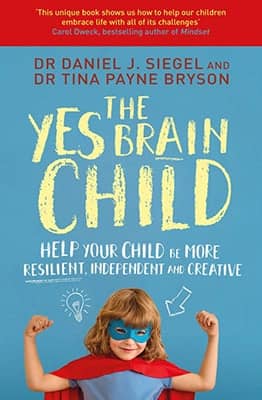Helping Your Child Create Balance in Their World

If a generation could be given a collective epitaph, ours would be, “They were just so busy”. At a time and place in history where we can achieve anything, we have come to believe we must do everything.
Our culture rewards and respects busy. We wear our busyness with pride, but it’s a house of cards and at some point, it will all come tumbling down. In the long term, ‘busy’ leads to worn out, it leads to illness, and it leads to disengagement from the people we love.
On some level we recognise that being so busy is not good for us. We talk about it constantly and we acknowledge the need to find balance in our lives. However, balance is not something you find, it is something you create.
True balance in life is built on a solid foundation. It is sure and strong. It can withstand life’s fluctuations in circumstance, health, and luck. That is what we need to create for ourselves, and it is what we need to model for our children.
What creates balance?
Balance in life is born of five pillars. They are:
- Understand yourself.
- Accept that not everything is under your control
- Be aware of your priorities
- Choose to live in the moment
- Control expectations
This is how we create those solid foundations of balance and how we teach them to our children:
1. Balance Comes from Understanding Yourself.
A big part of creating balance is knowing who you are. For adolescents this is difficult because they are still trying to figure that out. When they get to a point where they can embrace their individuality and not be so worried about fitting in, they will have more chance of creating balance.
When kids notice and put value on their individuality, they start to figure out what works for them and what doesn’t. After that we need to encourage them to speak up and articulate who they are and what they need from others.
Tip: Celebrate variety and difference in your family and in the world. Kids can be very confused about their identity, and they need to know that whoever they are is okay. This means resisting the urge to compare kids to their siblings, their peers and especially not to you at their age.
2. Balance Comes from Accepting That Not Everything Is Under Our Control
Teach kids to be mindful of what they can control and what they can’t. Part of finding balance is finding acceptance. When kids recognise that a lot of things are out of their control, the mental load reduces. It is very liberating to know they are not responsible for everything.
Tip: Parents can help kids understand what is within their control and what isn’t by using diagrams like this one. Draw a fresh circle with your child and with each thing that worries or distracts them, get them to place it into or outside of the circle.

3. Balance Comes When We Are Aware of Our Priorities
Most people aren’t aware of their priorities. We get sucked into the busyness of life and we end up spending the least amount of time on the things we care about the most. Sometimes we need to stop and take stock. Take a deep breath and think, “Is this what I want? Is this who I want to be?” Then we can focus on our priorities.
Kids deal with a lot of other people’s priorities. There are their parents’ hopes and wishes, their teachers’ programs and ambitions for them and the opinions and judgements of their peers. Kids are still developing their own identity and autonomy. They want to please everyone. Unfortunately, this means they may not even truly know what they want or what their priorities are.
Tip: The best way to teach kids about priorities is to model a life where your priorities are clear and openly discussed. Encourage kids to make decisions about their priorities too. That will mean sometimes asking them to make choices.
4. Balance Is Created When We Choose to Live in The Moment
Not everything has to be about success or failure, and we don’t have to be good at everything to enjoy experiences. Too many of our kids only focus on tasks and activities that can define them as successful or fitting in.
One of my greatest joys is swimming. There are Olympians who have done less swimming than me. That said…I’m ordinary at it. So, why persist? Well, because why would I let a tiny thing like lack of talent get in the way of enjoying my swim time. I feel the water and sun on my skin, life’s drama is suspended, and nobody can talk to me. It is bliss. We need to teach kids that sometimes the bliss is found in the ordinary. You don’t have to always compete, and you don’t have to be brilliant.
Tip: Encourage kids to try new things and not quit just because they aren’t great at it. Shift their focus to how things feel. Not everything has to be a competition, we can just have fun.
5. Balance Controls Expectations
It is easy to think that if we lowered expectations of ourselves and our kids, we would all have a more balanced life. In fact, it is more important to see where expectations come from and then manage them.
Children make all sorts of strange connections about expectations. For example, a student told me, “My parents will only be proud of me if I get an A average.” It simply isn’t true, but when we look at the way many of us celebrate high grades, it’s easy to see how kids could reach that conclusion. This doesn’t mean we need to lower standards, it means we need to examine and articulate what really matters to us.
Tip: Work with kids to figure out whose expectations they are trying to meet and why?
Finally….
When we talk about balance, we are often trying to see how much we can hold at once without dropping anything. Real balance is about solidity and knowing what is worth holding. We need to create a strong framework, and then, we need to value that framework enough to guard its integrity and protect it from things that simply don’t matter.

Lee-Elle’s Insights from the ‘Make it 16’ Forum
Lee-Elle Cooper is a passionate Year 12 student who advocates for youth engagement and political participation. She has recently returned from the Make It 16 Forum in Canberra.

With Laurissa Knowles From Valley Depths to Mountain Peaks (1993)
Laurissa Knowles (1993) has had an incredible career journey so far, from Santa Maria College Teacher to Celebrant and Councillor.

Elevating Spaces: Diana Ellis’ Signature Touch & Architecture Magic
What happens when you mix a love for art, travel, nature, and creativity with construction and building? You get the essence of Diana Ellis’ career!
- Featured, Featured #MentalHealthStrategy, wellbeing
Author: Santa Maria College
Santa Maria College is a vibrant girls school with a growing local presence and reputation. Our Mission is to educate young Mercy women who act with courage and compassion to enrich our world. Santa Maria College is located in Attadale in Western Australia, 16 km from the Perth CBD. We offer a Catholic education for girls in Years 5 – 12 and have 1300 students, including 152 boarders.







